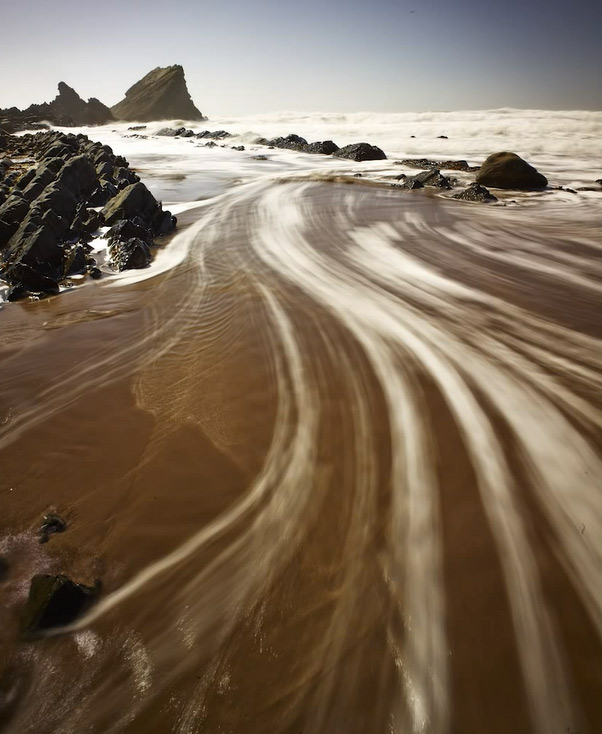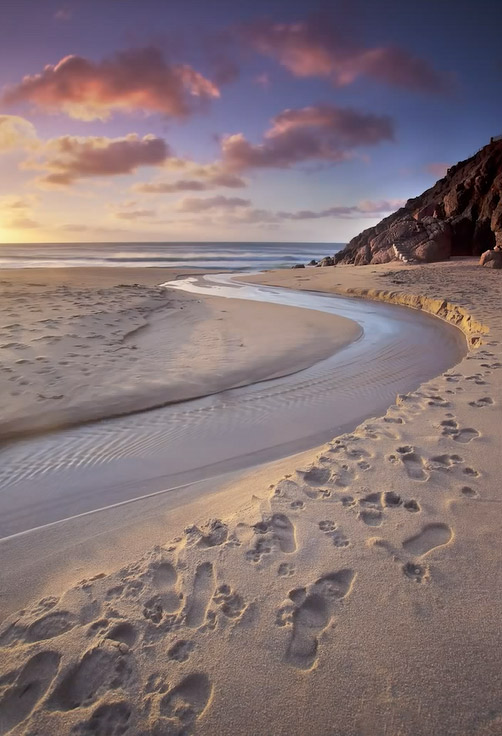Surrounded by the beauty of nature, many photographers experience a longing to capture those stunning vistas, towering mountains and waterfalls, decorated valleys, and quiet pools, alive with light and color. Unfortunately, after photographing landscapes, many photographers often experience a startling sense of defeat when the images turn out to be shapeless, emotionless and otherwise amateur in post-processing.
In this video, award-winning landscape photographer Antony Spencer shares 10 tips for landscape photographers looking to hone their craft and produce high quality work—including some composition advice to help infuse photographs with shape and feeling:
1. Minimize camera shake. Using a tripod, a remote shutter release cable, and mirror lock mode will drastically improve the sharpness of long exposures. And if it’s windy during a shoot, remove that camera strap!
2. Create strong composition by finding natural S-shapes. Also remember to use the rule of thirds and keep as much of the image in sharp focus as possible—especially the foreground.
“The foreground is the crucial element of any landscape photograph,” Spencer said. “If I can find a beautiful S-shape curve to lead through the foreground and out into the photograph, I know I’m on to something.”

Here, Spencer’s trained eye led him to check the water currents during low tide for S-curves.
3. Always carry essential camera accessories. Spencer never leaves home without a tripod, a polarizing filter, a neutral density filter, a small compact ball head, and a cable release.
4. Plan ahead. In as much detail as possible, scope out your location before you even arrive. Know where the sun will be at the time of your shoot and how long it will be there.
5. Don’t try to fit everything you see into one photograph. Don’t be afraid to zoom in and break the scene down into smaller sections.
“Quite often, just picking out small sections [and] working with a longer lens will, more often than not, present you with the best photographs,” said Spencer.

A horizontal orientation would have shown more of the beach, but it was only by breaking the photo down into a smaller section that Spencer was able to frame the S-curve so perfectly.
6. “Future-proof” your work. Buy the best gear you can afford.
7. Use different camera systems based on the needs of each image. You have to know your different systems quite well to be able to make this call, so study up on your cameras and lenses and take many practice shots.
8. Blend images sparingly. Don’t depend on blending, Spencer says, but do blend if a particular shot calls for it. Blending is great for keeping both the foreground and the background sharp, or for achieving sharp detail in one area of the photograph and capturing movement in another area.

This shot required blending in order to guarantee both sharp flowers and milky waves.
9. Shoot in the highest quality possible. Shoot in manual mode at the optimum ISO for your camera system. This will most likely require you to take some practice shots.
“It’s not always necessarily the lowest ISO setting that’s going to produce the cleanest files and give you the best result,” Spencer said. “I think that’s definitely worth taking some time to investigate before you start using your camera really seriously in the field.”
10. Seek out unique subjects and be willing to work hard to find them. Be willing to go anywhere and do anything within reason to take photographs that will set you apart in the field and get your work noticed.
“Do whatever it takes to get wherever [you] need to be to make the images [you] want to make… pushing yourself to get away from the main locations and the really well-trodden locations photographically and getting into the backcountry to create images that people don’t see or people haven’t seen,” Spencer said. “Anything that’s new and unique will really help to elevate anybody that’s striving to stand out as a landscape photographer.”
Like This Article?
Don't Miss The Next One!
Join over 100,000 photographers of all experience levels who receive our free photography tips and articles to stay current:






Some great tips here, thanks for sharing.
Wonderful. Thankyou.